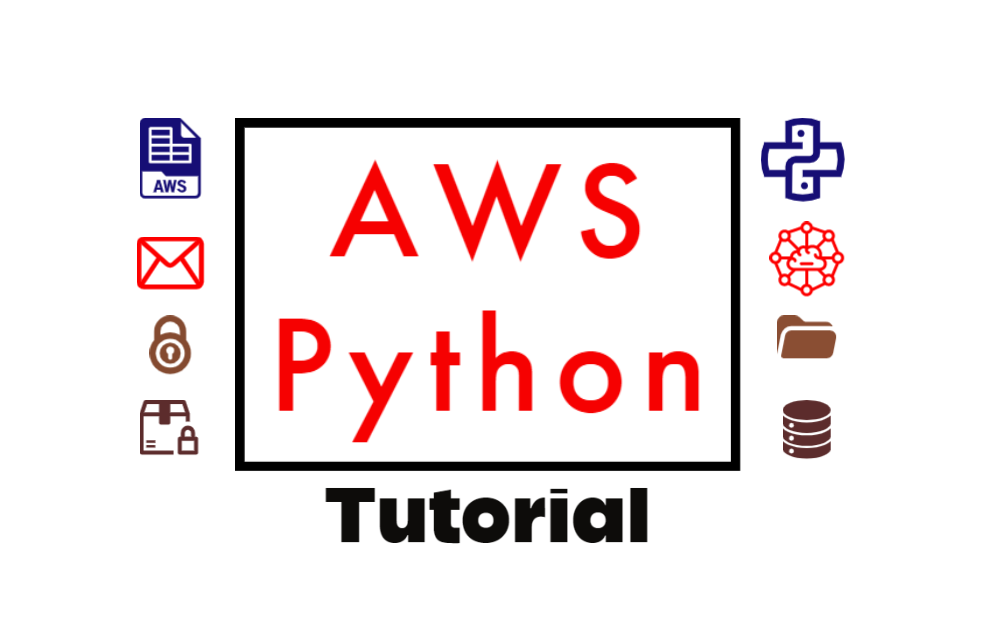Boto3 Python
Boto3 Python
Boto3 is a Python SDK (Software Development Kit) for Amazon Web Services (AWS). It provides the functionality to interact with various AWS services such as S3, EC2, SQS, and many more.
Here are some of the key features of Boto3:
Service-First Architecture: Boto3 is designed to allow you to easily access your AWS services. It uses a service-first architecture, meaning that each service (e.g., S3, EC2) has its own module within the library. Low-Level Functionality: Boto3 provides low-level functionality, allowing you to make fine-grained control over your AWS resources. This is particularly useful for complex or custom applications. High-Level Abstractions: In addition to providing low-level functionality, Boto3 also includes high-level abstractions that simplify the process of working with AWS services. For example, it provides a simple interface for uploading files to S3. Error Handling: Boto3 includes robust error handling mechanisms. If an error occurs when making a request to an AWS service, Boto3 will catch the exception and provide a helpful error message. Support for Multiple Regions: Boto3 allows you to interact with AWS services in multiple regions. This is particularly useful if you have applications that require data processing or storage across different geographic locations. Support for Multiple AWS Accounts: Boto3 also supports interaction with multiple AWS accounts, making it a convenient tool for managing large-scale distributed systems.Some of the key benefits of using Boto3 include:
Simplified Development Process: By providing a simplified interface to AWS services, Boto3 simplifies the development process, allowing you to focus on building your application rather than wrestling with low-level details. Improved Code Reusability: The modular design of Boto3 makes it easy to reuse code across different projects and applications. Robust Error Handling: By catching errors and providing helpful error messages, Boto3 reduces the complexity of handling exceptions in your application.Here is a simple example of how you might use Boto3 to upload a file to S3:
import boto3
s3 = boto3.client('s3')
s3.upload_file(
Filename='/path/to/your/file.txt',
Bucket='my-bucket-name',
Key='path/to/your/file.txt'
)
In this example, we first import the Boto3 library. Then, we create an S3 client object using boto3.client('s3'). Finally, we use the upload_file method to upload a file from the specified local path to the specified bucket and key.
Overall, Boto3 provides a powerful and flexible way to interact with AWS services in Python. Its simplicity, robustness, and flexibility make it an ideal choice for any developer looking to leverage AWS resources in their application.
Python aws tutorial

I'm happy to help! Here's a comprehensive AWS tutorial using Python:
Table of Contents:
Introduction to AWS and Python Setting up your AWS environment Using Boto3 to interact with AWS services Creating an S3 bucket and uploading files Storing data in DynamoDB Sending emails using SES Running a Lambda function ConclusionIntroduction:
AWS (Amazon Web Services) is a cloud platform that offers a wide range of services for computing, storage, databases, analytics, machine learning, and more. Python is a popular programming language known for its ease of use, flexibility, and large community. In this tutorial, we'll explore how to use Python with AWS.
Setting up your AWS environment:
To start using AWS with Python, you need to set up your environment:
Sign in to the AWS Management Console (https://console.aws.amazon.com/). Create an account if you don't have one already. Install the AWS CLI (Command Line Interface) on your machine by runningpip install awscli. Set up your AWS credentials by creating a file named ~/.aws/credentials with the following format:
[default]aws_access_key_id = YOUR_ACCESS_KEY_ID
aws_secret_access_key = YOUR_SECRET_ACCESS_KEY
Using Boto3 to interact with AWS services:
Boto3 is Python's interface to AWS. It allows you to use Python scripts to interact with various AWS services.
Install Boto3 by runningpip install boto3. Import the Boto3 module in your Python script:
import boto3
Creating an S3 bucket and uploading files:
Amazon S3 (Simple Storage Service) is a cloud-based object storage service.
Create an S3 bucket using Boto3:Upload a file to the S3 bucket:s3 = boto3.client('s3')bucket_name = 'my-test-bucket'
s3.create_bucket(Bucket=bucket_name)
file_path = 'path/to/file.txt'file_name = 'test.txt'
s3.put_object(Body=open(file_path, 'rb'), Bucket=bucket_name, Key=file_name)
Storing data in DynamoDB:
Amazon DynamoDB is a fast, fully managed NoSQL database service.
Create a DynamoDB table using Boto3:Store data in the DynamoDB table:dynamodb = boto3.client('dynamodb')table_name = 'my-test-table'
table_attributes = [
{'AttributeName': 'id', 'AttributeType': 'S'},
{'AttributeName': 'name', 'AttributeType': 'S'}
]
dynamodb.create_table(TableName=table_name, AttributeDefinitions=table_attributes)
data_item = {'id': '1', 'name': 'John'}dynamodb.put_item(TableName=table_name, Item=data_item)
Sending emails using SES:
Amazon Simple Email Service (SES) is a cloud-based email service.
Create an SES client using Boto3:Send an email using SES:ses = boto3.client('ses')
recipient_email = '[email protected]'subject = 'Test email from AWS Python script'
body_text = 'This is a test email sent by an AWS Python script.'
body_html = 'This is a test email sent by an AWS Python script.'
ses.send_raw_email(Source='[email protected]', Destination=recipient_email, Message=data)
Running a Lambda function:
Amazon Lambda is a serverless compute service.
Create a Lambda function using Boto3:Invoke the Lambda function:lambda_ = boto3.client('lambda')function_name = 'my-test-function'
runtime = 'python3.8'
handler = 'index.handler'
lambda_.create_function(FunctionName=function_name, Runtime=runtime, Handler=handler)
lambda_.invoke_function(FunctionName=function_name, Payload='{"key": "value"}')
Conclusion:
In this tutorial, we've explored how to use Python with AWS services such as S3, DynamoDB, SES, and Lambda. You can now start building your own cloud-based applications using these services with the help of Boto3.





























